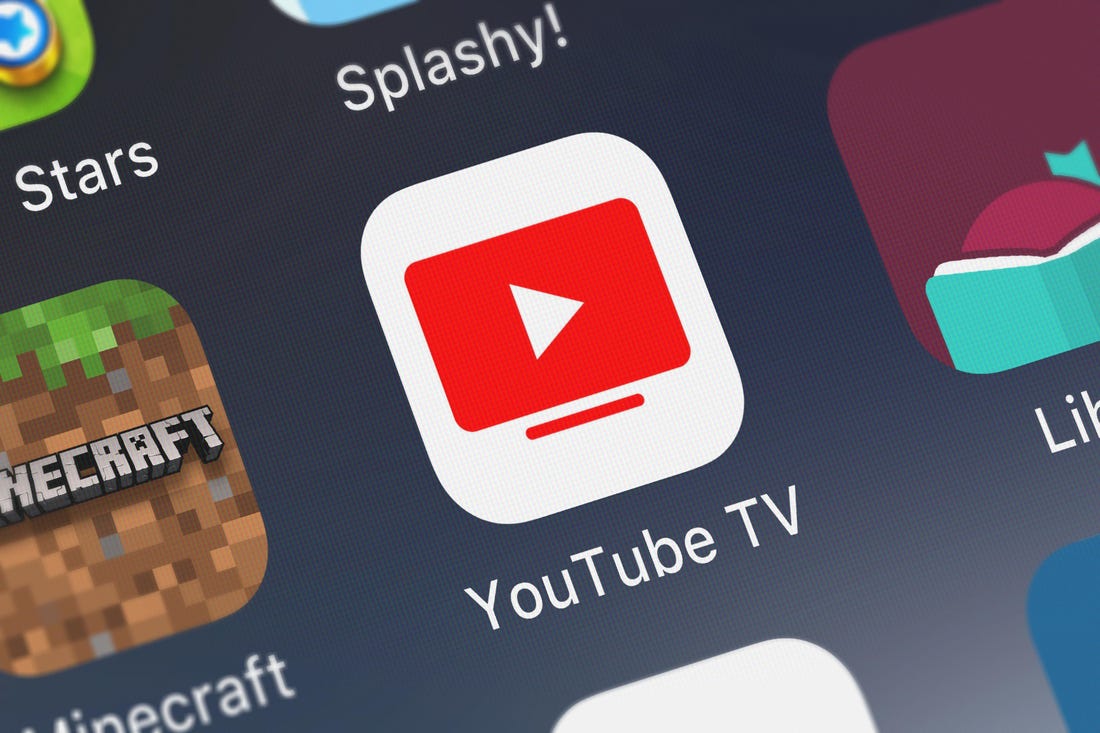
I suspect I am not the only one who sees a pitch for YouTube TV every single time I watch a YouTube video.
Like literally every single time.

Which is as good an explanation as any to why multiple analysts say that YouTube TV has surpassed Hulu + Live TV for the vMVPD crown with as many as 4 million subscribers.
That number is also an explanation for why NBCUniversal seemed hellbent on recreating cable’s carriage battles by trying to pressure YouTube into including Peacock with their bundle.
At some level it must have seemed like a clever idea. Follow me here: Hulu + Live TV is actually a much better deal than YouTube TV, because for the same price you also get all of Hulu’s original and SVOD programming thrown in, gratis. If YouTube could offer Peacock and its original programming as part of their bundle, the thinking must have gone, it would eliminate Hulu’s competitive advantage and thus be a win for both Peacock and YouTube.
Or so they thought.
Google was having none of it and retaliated by publicly proclaiming that if they eliminated NBC’s networks from their bundle, they’d be able to drop the price by $10/month.
NEXT TV NEWSLETTER
The smarter way to stay on top of the streaming and OTT industry. Sign up below.
Which is all well and good, only I’m not sure if they’d thought through the fact that by not having any NBCU channels at all they’d really be handing Hulu a huge competitive advantage, making this a classic example of “cutting off your nose to spite your face.”
Why It Happened
vMVPDs are still popular right now as they provide access to the broadcast channels, news and sports that are not yet available on streaming. Better still, they remain considerably cheaper than traditional cable TV, especially once you factor in the monthly “rental fee” for those cable boxes and all the other fees.
Plus they can be accessed from the same smart TV or streaming device interface as Netflix and other streaming services, so no more having to locate the remote and switch inputs every time you want to go from cable to streaming and back again.
At the same time, NBCU has been struggling to find a reason for Peacock to exist. The service has yet to have anything resembling a big breakout hit, and if social media is any indication, many viewers found their Olympic coverage to be confusing, especially when navigating the difference between free Peacock and subscription Peacock.
Granted NBCU was dealt a bad hand when the Olympics were cancelled last year—that was supposed to be Peacock’s debut moment—but there’s a lot of competition out there and Peacock has yet to settle on where their programming fits in the new streaming ecosystem, what they want consumer’s perception of them to be.
They’ve done a great job of explaining the value of their various properties to advertisers (all that data!) but the consumer play is still fuzzy.
Hence the desire to use YouTube to sign up more subscribers with a poorly thought out plan that doesn’t really help them to compete with Hulu.
While Hulu originals are integrated into Hulu + Live TV, YouTube TV viewers would still need to download the Peacock app to access Peacock programming. And given that ad-supported Peacock is just $5 per month, getting it for free is not going to seem like the deal of the century.
What’s Really Going Down.
The biggest elephant in the room is the fact that Peacock doesn’t seem to have a lot of paid subscribers. Reporting has been fuzzy, but most of Peacock’s initial round of subs signed up for the free service, and it’s unclear how many have moved to one of the two paid plans. Similarly, millions of Comcast and Cox subscribers get Peacock for free as part of their service and that helps pump up Peacock’s numbers.
The second, slightly smaller elephant, is one the LightShed Partners crew has spotted: the most likely beneficiary of NBCU pulling out of YouTube is Hulu. And wouldn’t you know it, NBCU still owns 30% of Hulu and is in the process of selling it. S if Hulu’s value were to suddenly go up …
While this calculation is unlikely to have been the motivating factor in the dispute, it’s sure to have crossed NBCU’s mind.
That goes for the third elephant in the room too, which is that Comcast is rolling out its own smart TV with its own X1-based tvOS.
While it’s possible that Comcast is considering some sort of vMVPD service based on the existing Comcast product, it’s far more likely that they’re looking at owning the interface, which is where the real money is.
So there’s that too.
What They Should Do
With 4 million viewers, YouTube TV is now one of the larger MVPDs, virtual or otherwise.
Ars Technica is reporting that the Peacock deal is already off the table in its original form, but it would seem to be a smarter move to do that thing so many players in the TV space are afraid of doing: collaborate.
NBCU can offer YouTube TV subscribers some sort of deal if they sign up for Peacock—say 10% off for the year, or even offer the first three months free. Just offer a little somethin’-somethin’ to drive subscriptions for Peacock and make YouTube seem like a champ for getting this deal for their subscribers.
Once they figure out a fair price for the annual carriage fee, a far more achievable task, everyone goes home happy and consumers don’t have to see programmers and distributors fighting and sniping at each other again.
Hollywood loves a happy ending.
Alan Wolk is the co-founder and lead analyst for media consultancy TV[R]EV
